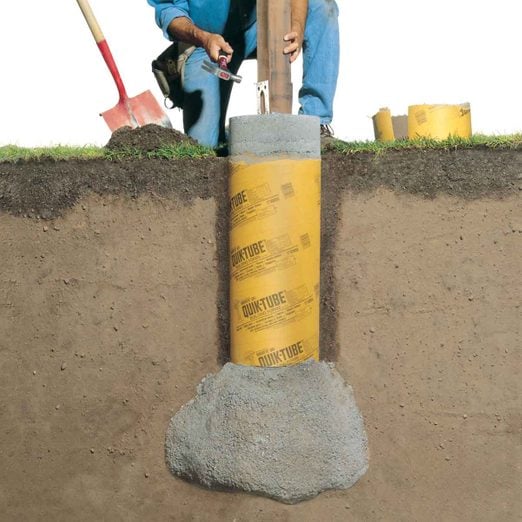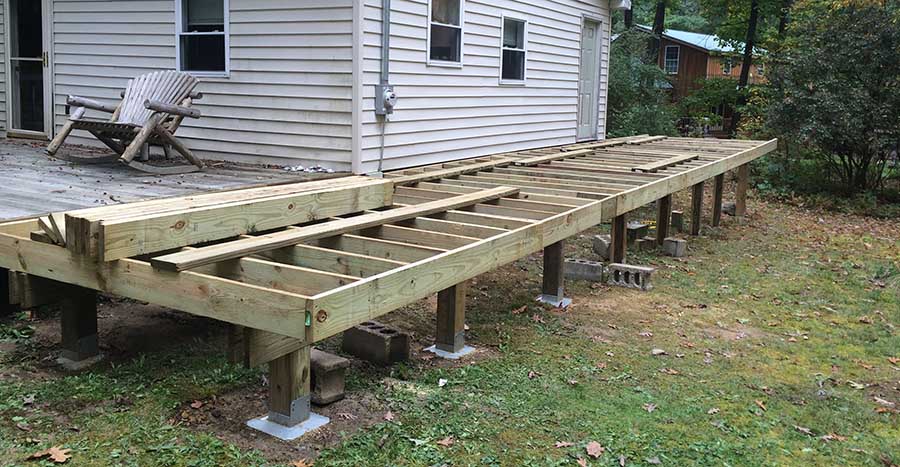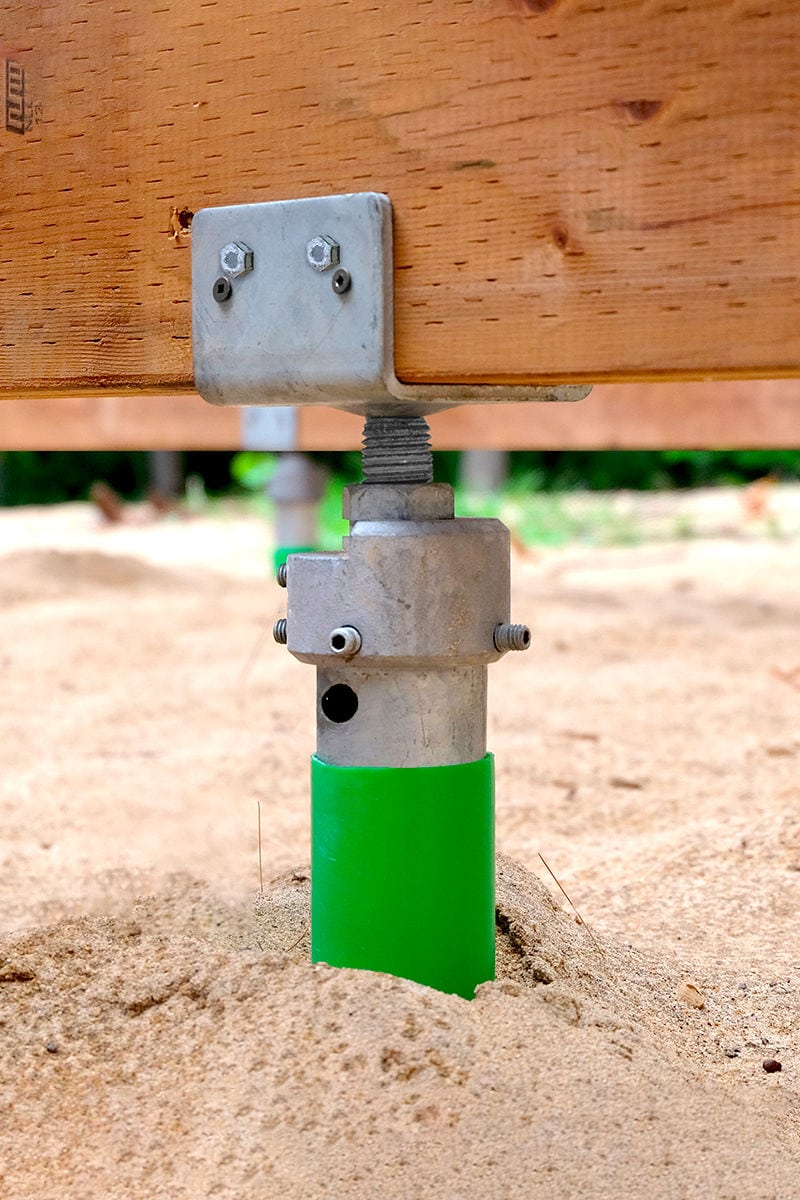Expert Tips for Installing Deck Footings to Support Your Outdoor Room
When it involves building a deck, among one of the most important aspects to think about is the setup of appropriate grounds. These grounds are the foundation upon which your outside room will relax, supplying security and assistance for several years ahead. What specifically does it take to mount deck footings correctly? In this conversation, we will certainly check out professional suggestions and techniques that can aid make certain a effective and sturdy deck installation. From selecting the ideal kind of grounds to avoiding typical blunders, we will offer you with the understanding and insights you need to confidently get started on your deck-building trip. Let's dive right in and uncover the trick to a lasting and solid exterior area.
Relevance of Proper Deck Grounds
Proper deck grounds are important for ensuring the stability and long life of your exterior space. When constructing a deck, it is important to take note of the structure on which it will relax. Deck grounds provide the required assistance for the whole framework and aid distribute the weight equally - Deck Footings. Without solid and appropriately mounted footings, your deck might become unpredictable, leading to security threats and expensive fixings.

Along with security, proper deck grounds also add to the long life of your outside area (Deck Footings). Grounds that are created and created to stand up to the aspects and dirt problems in your area will certainly aid stop the deck from resolving or shifting with time. By making sure the grounds are correctly sized and mounted, you can lessen the risk of damages to the deck structure, extending its life-span and decreasing the demand for costly repair work or substitutes

Picking the Right Kind of Grounds
When picking the ideal kind of grounds for your deck, it is essential to consider aspects such as soil conditions, local building codes, and the overall style of your outdoor room. The sort of footing you select will play a vital function in making sure the security and long life of your deck.
One usual type of ground is the concrete footing. Concrete grounds are suitable for a lot of dirt conditions and supply exceptional support for decks.
In many cases, you might require to utilize specific grounds, such as pile grounds or deep foundations, if you are constructing a multi-level or big deck. These footings are designed to disperse the weight of the deck over a bigger location, making certain stability and preventing sinking or resolving.
Before choosing a kind of footing, it is vital to consult regional building codes and laws to guarantee conformity. In addition, think about the design and planned usage of your exterior room. Aspects such as the size, shape, and load-bearing needs of your deck will affect the kind of footing that is most appropriate.
Preparing the Ground for Footing Installation
To appropriately prepare the ground for footing installment, it is essential to assess the dirt problems and take needed actions to ensure security and longevity of the deck. The initial step is to dig deep into the area where the grounds will certainly be set up. The depth of the excavation will certainly depend upon the frost line in your region and the particular demands of the deck style. It is necessary to remove any greenery, rocks, or particles from the excavation to ensure a strong foundation.
As soon as the location has been dug deep into, the following step is to compact the soil. This can be done using a plate compactor or by using a hand meddle. Compacting the dirt assists to remove any voids or air pockets, which can bring about settling and instability in time.
After compacting the soil, it is important to lay a layer of crushed rock or crushed rock at the end of the excavation. This will offer drain and help to avoid water from merging around the grounds, which can cause disintegration and instability.
Step-by-Step Guide to Putting Up Deck Footings
After appropriately preparing the ground for footing installation, the following action is to begin the procedure of mounting deck grounds. This detailed overview will provide you with a clear understanding of how to mount deck grounds for your exterior area.
Determine the area: Begin by marking the settings of the deck grounds utilizing risks and string. Make sure that the locations align with the style and format of your deck.
Dig the holes: Utilize an article opening miner or an auger to dig the holes for the grounds. The deepness and size of the openings must be in conformity with neighborhood building ordinance and the details requirements of read this article your deck style.
Level the openings: Make use of a level to make certain that the openings are dug to the proper deepness and are degree with each other. (Deck Footings)
Add crushed discover here rock: Place a layer of crushed rock at the end of each hole to boost drain and stop the timber from decomposing.
Place the grounds: Place the footings into the holes, seeing to it they are level and plumb. Utilize a level and a gauging tape to make sure accuracy.
Secure the grounds: Put concrete right into the holes around the grounds, loading them to the top. Make use of a post degree to ensure the grounds remain degree as the concrete sets.
Enable time for curing: Let the concrete cure according to the manufacturer's guidelines prior to proceeding with the deck building.
Usual Errors to Avoid Throughout Footing Installation
One crucial facet to consider during the installation of deck footings is avoiding typical blunders that can jeopardize the stability and long life of your exterior space. While deck grounds may look like a straightforward and uncomplicated component of the building and construction process, overlooking specific variables can result in pricey repair work and possible security risks down the line.

Furthermore, neglecting to install correct water drainage measures can create water to build up around the grounds, bring about rot, degeneration, and the eventual weakening of the deck's structure. Moreover, using the incorrect kind of footing material or stopping working to properly secure the footings can jeopardize their architectural honesty.
To stay clear of these mistakes, it is important to talk to a specialist or adhere to market standards to guarantee correct ground setup. By doing so, you can make certain the security and long life of your outside space, giving a pleasurable and secure setting for several years to come.
Conclusion
Finally, installing correct deck grounds is critical for the security and longevity of your outside area. By picking the ideal sort of grounds and appropriately preparing the ground, you can ensure a solid structure for your deck. Complying with a detailed overview and staying clear of usual errors during footing installment will certainly additionally improve the sturdiness and safety of your deck.
Appropriate deck footings are necessary for guaranteeing the stability and longevity of your outdoor space. The look at here footings serve as a connection between the ground and the deck, allowing the weight of the deck and its passengers to be distributed uniformly into the dirt.One common type of ground is the concrete ground. Put the grounds: Put the grounds into the openings, making sure they are degree and plumb. Secure the footings: Pour concrete right into the openings around the grounds, filling them to the top.